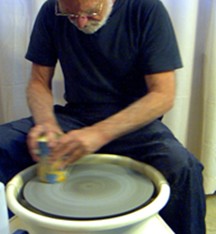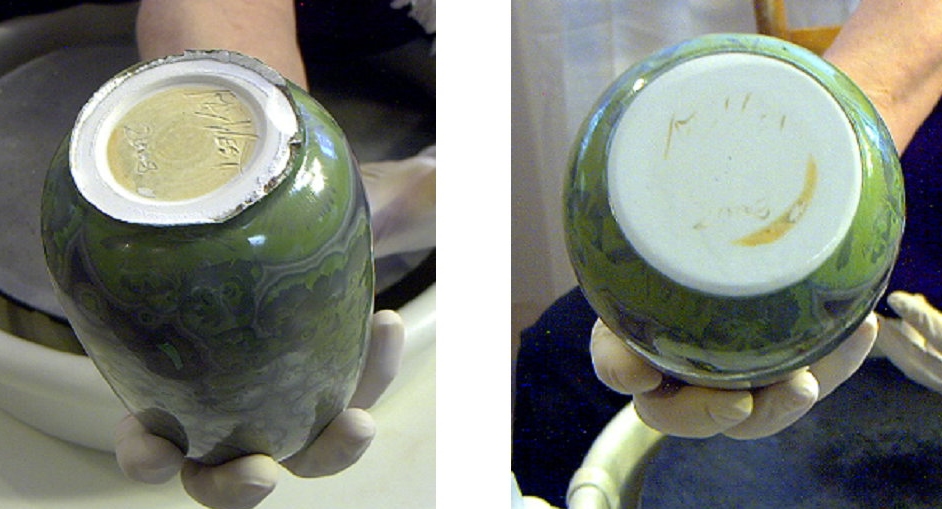 Loading... Please wait...
Loading... Please wait...- Home
- TIPS FOR USING AND MAINTAINING THE GRINDING DISCS
TIPS FOR USING AND MAINTAINING THE GRINDING DISCS
-
First, clean the surface of the potter's wheel thoroughly. Small pieces of any debris on the wheel head or the disc can cause an up and down wobble, and can cause the disc to not spin true..
-
Firmly attach regular standard bat pins to your wheel head if you have not already done that. The two holes on the disc will not interfere with the grinding operation. If you are grinding an edge, avoid the holes, and use the interior part of the disc until the edge is smoothed off. This takes just a few seconds. Some of our discs sold prior to 2020 are used only with special low-profile bat pins.
-
Place the diamond grinding disc onto the attached pins, just like you would a throwing bat. The double-sided discs have a coarse/medium side (100 grit) and a fine side (400 grit). Just flip the disc over to change grits.
-
Use water with the disc. It is best to use a steady, continuous drip of water. Clean the disc with soapy water and a stiff brush occasionally to remove compacted material from between the diamond particles. It is a good practice to rinse the disc well, quickly brush it, and remove it from the wheel head, dry it off and put it away after you use it.
-
The diamond particles are much harder than any ceramic, and the discs should never completely wear out. They do, however, over time become “dull” because tiny pieces chip off and leave a less sharp cutting edge. This can be remedied some by reversing the direction of the potters wheel for an hour or two of use from time to time, thereby using a different edge on the diamond particles. A worn disc can be dressed by rubbing an aluminum oxide or silicon carbide dressing stick back and forth along across the stationary disc, creating new edges on the worn diamonds and removing some of the electroplated nickle bond, exposing more diamonds. This can all lengthen the life-span, but the discs will eventually have to be replaced.
-
The discs may develop small rust spots after use. This is normal, and cosmetic only, and does not affect the function. They can be removed with Naval Jelly (phosphoric acid) or swimming pool acid (dilute hydrochloric acid) if you wish, using good care with these corrosive materials.
- The higher the rpm speed of your potter's wheel, the better the discs will perform. On some wheels you can put on a larger pulley on the motor to increase that speed, but that will lower the torque of the wheel, lowering the ability to center and throw larger pieces.
The photograph at the bottom of this page shows a large chip in the bottom of a vase before and after it was ground away.
TIPS FOR USING THE DIAMOND SATURATED POLISHING PADS
- The 10" diameter 1/2" thick pads are for polishing finished ceramics. They have a magnetic rubber backing that stick to any steel/nickel surface such as your electroplated diamond grinding disc.
- Before polishing, remove any burrs, or rough edges from what you are polishing. The smoother the surface is at the start, the better the polish will be. Sharp edges can damage the pad.
- Use the pads with water, either by hand, or with a continuous water drip.
- The pads will soften somewhat over time with use.

